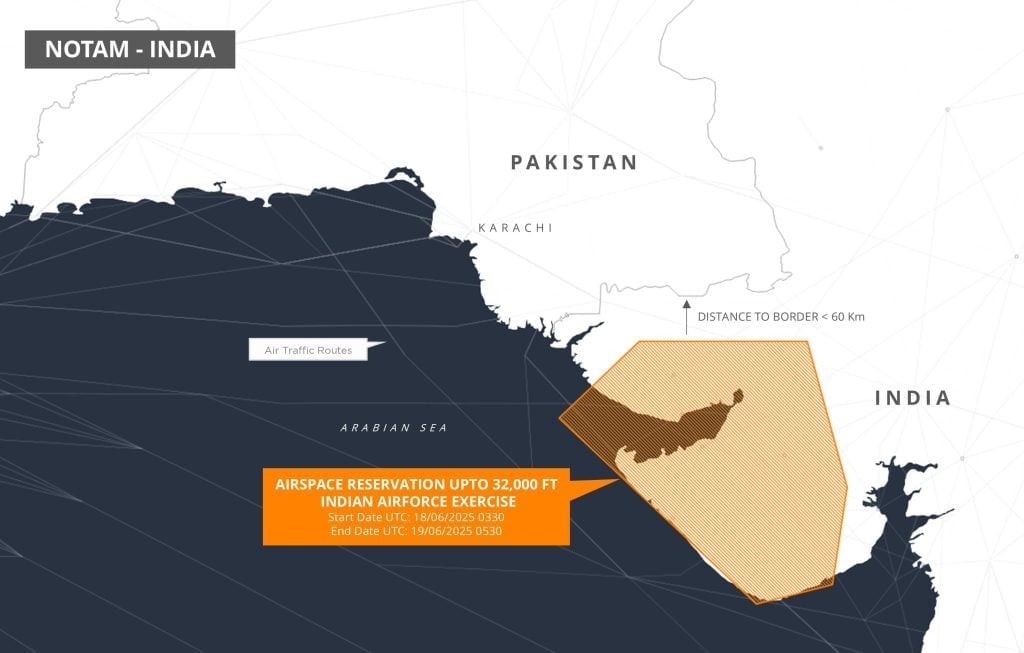In a notable development within the realm of military operations, the Indian government has issued a Notice to Airmen (NOTAM) designating specific airspace along its southern border with Pakistan for an upcoming Indian Air Force (IAF) exercise. Scheduled for June 18-19, 2025, the high-altitude exercise will take place at altitudes reaching up to 20,000 feet, close to the Arabian Sea near the Gujarat-Pakistan border. This maneuver indicates an increase in military readiness amidst escalating tensions in the region.
The timing of the impending exercise closely follows India’s recent Operation Sindoor, initiated in early May. That operation saw Indian forces conducting missile strikes on Pakistani military targets in Punjab and areas administered by Pakistan in Kashmir. This aggressive action was a direct response to a terrorist attack in Pahalgam, Jammu and Kashmir, which resulted in the deaths of several Indian civilians and security personnel.
Defense analysts speculate that this forthcoming drill may also provide an opportunity to evaluate advanced military technologies, possibly including hypersonic missile capabilities—a topic recently hinted at by S. Somanath, a former chief of the Indian Space Research Organisation (ISRO). Though the Ministry of Defence has labeled the exercise as part of standard preparedness measures, its context and geographical proximity to Pakistan underscore a significant strategic interest.
Meanwhile, the Line of Control (LoC) remains on high alert as both nations vigilantly monitor each other’s activities. Previous measures, such as airspace restrictions that banned Pakistani aircraft from certain Indian regions between April 30 and May 23, illustrate the delicate and rapidly changing dynamics of India-Pakistan relations.
Moreover, analysts have noted that the exercise aligns with shifting geopolitical conditions in neighboring Iran, suggesting a broader context for India’s military readiness amidst regional instability. Despite the lack of official statements regarding coordinated actions, the accumulation of military activities in the area has captured the attention of global defense experts.
Local authorities have asserted that the exercise will be conducted with civilian safety as a priority, and arrangements have been made to reserve airspace in a manner that minimizes disruptions to commercial aviation. Nonetheless, the announcement has attracted international scrutiny, with strategic circles closely observing any signs that could indicate escalations between the two nuclear-armed nations.



















